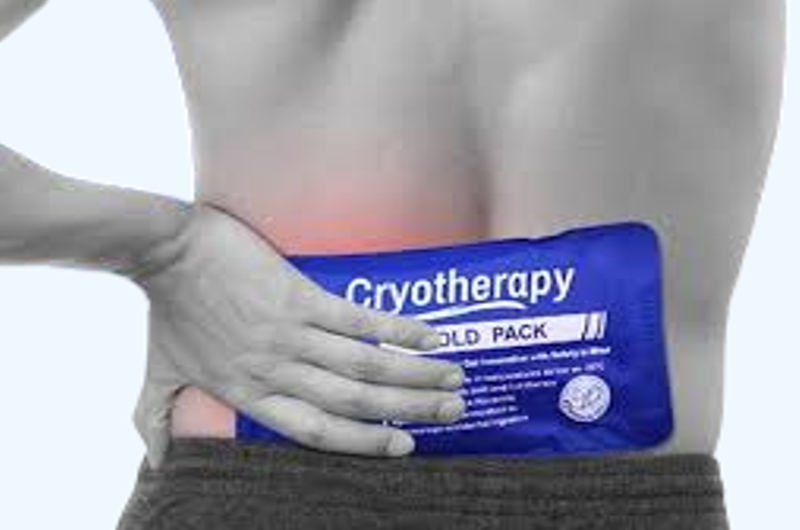Introduction
Ice therapy, also known as cryotherapy, is a widely used method for reducing pain, inflammation, and speeding up recovery. Whether you’re an athlete dealing with muscle soreness, someone recovering from surgery, or just managing everyday aches, ice therapy can be a powerful remedy. This ultimate guide explores the benefits, techniques, and best practices for using cold therapy effectively.
What Is Ice Therapy?
Ice therapy involves applying cold temperatures to injured or inflamed areas of the body to reduce swelling, numb pain, and promote healing. It works by constricting blood vessels, decreasing blood flow, and slowing down nerve activity, which helps minimize discomfort and inflammation.
Benefits of Ice Therapy
1. Reduces Inflammation – Cold application helps decrease swelling by limiting blood flow to the injured area.
2. Relieves Pain – Numbing the nerves reduces pain signals sent to the brain.
3. Speeds Up Recovery – By minimizing swelling, ice therapy helps tissues heal faster.
4. Prevents Further Damage – Immediate icing after an injury can limit tissue damage.
5. Eases Muscle Spasms – Cold therapy relaxes tense muscles and reduces spasms.
6. Post-Workout Recovery – Athletes use ice baths and cold packs to reduce delayed-onset muscle soreness (DOMS).
When to Use Ice Therapy
Ice therapy is most effective for:
– Acute injuries (sprains, strains, bruises)
– Post-surgical swelling
– Arthritis flare-ups
– Tendonitis and bursitis
Muscle soreness after intense workouts
Avoid ice therapy for:
Chronic pain without inflammation
Open wounds (unless directed by a doctor)
Conditions like Raynaud’s disease
Different Ice Therapy Techniques
1. Ice Packs
How to Use: Apply a cold pack or ice wrapped in a cloth for 15-20 minutes every 1-2 hours.
Ideal For: Localized ailments such as shoulder soreness or sprains of the ankle.
2. Ice Baths (Cold Water Immersion)
How to Use: Submerge the affected area (or whole body) in cold water (50-59°F) for 10-15 minutes.
Best For: Full-body recovery after intense exercise.
3. Ice Massage
How to Use: For five to seven minutes, apply circular pressure to the sore area with an ice cube.
Best For: Small muscle strains and tendon pain.
4. Compression with Ice
How to Use: Combine ice with an elastic bandage to reduce swelling further.
Ideal For: Joint injuries such as sprains of the wrist or knee.
5. Cryotherapy Chambers (Whole-Body Cryotherapy)
How to Use: Stand in a cryo-chamber for 2-4 minutes at extremely low temperatures (-200°F to -300°F).
Best For: Professional athletes and rapid recovery.
Best Practices for Ice Therapy
To avoid frostbite, always use a towel or cloth instead of applying ice directly to the skin.
Sessions should not exceed 20 minutes because prolonged exposure might harm tissues.Elevate the injured area – Helps reduce swelling more effectively. For acute injuries, use the R.I.C.E. method: Rest, Ice, Compression, Elevation..
Alternate with heat therapy – After 48 hours, switching to heat can improve blood flow for healing.
Natural Ice Therapy Remedies
1. Frozen Vegetable Packs – Peas or corn bags mold well to body contours.
2. DIY Ice Gel Packs – Mix water and rubbing alcohol in a zip-lock bag for a flexible cold pack.
3. Menthol-Based Gels – Products like Biofreeze provide a cooling effect similar to ice.
4. Cold Herbal Compresses – Soak a cloth in chilled chamomile or arnica tea for anti-inflammatory benefits.
Potential Risks and Side Effects
Long-term exposure to frostbite can harm nerves and skin.
Nerve Damage – Excessive cold can cause temporary numbness or tingling.
Skin Irritation – Some people may experience redness or discomfort.
Conclusion
Ice therapy is a simple, cost-effective, and powerful way to manage pain, reduce swelling, and accelerate healing. Whether you’re using an ice pack, ice bath, or cryotherapy, following the right techniques ensures maximum benefits with minimal risks. Incorporate cold therapy into your recovery routine and experience faster relief from injuries and muscle soreness.


